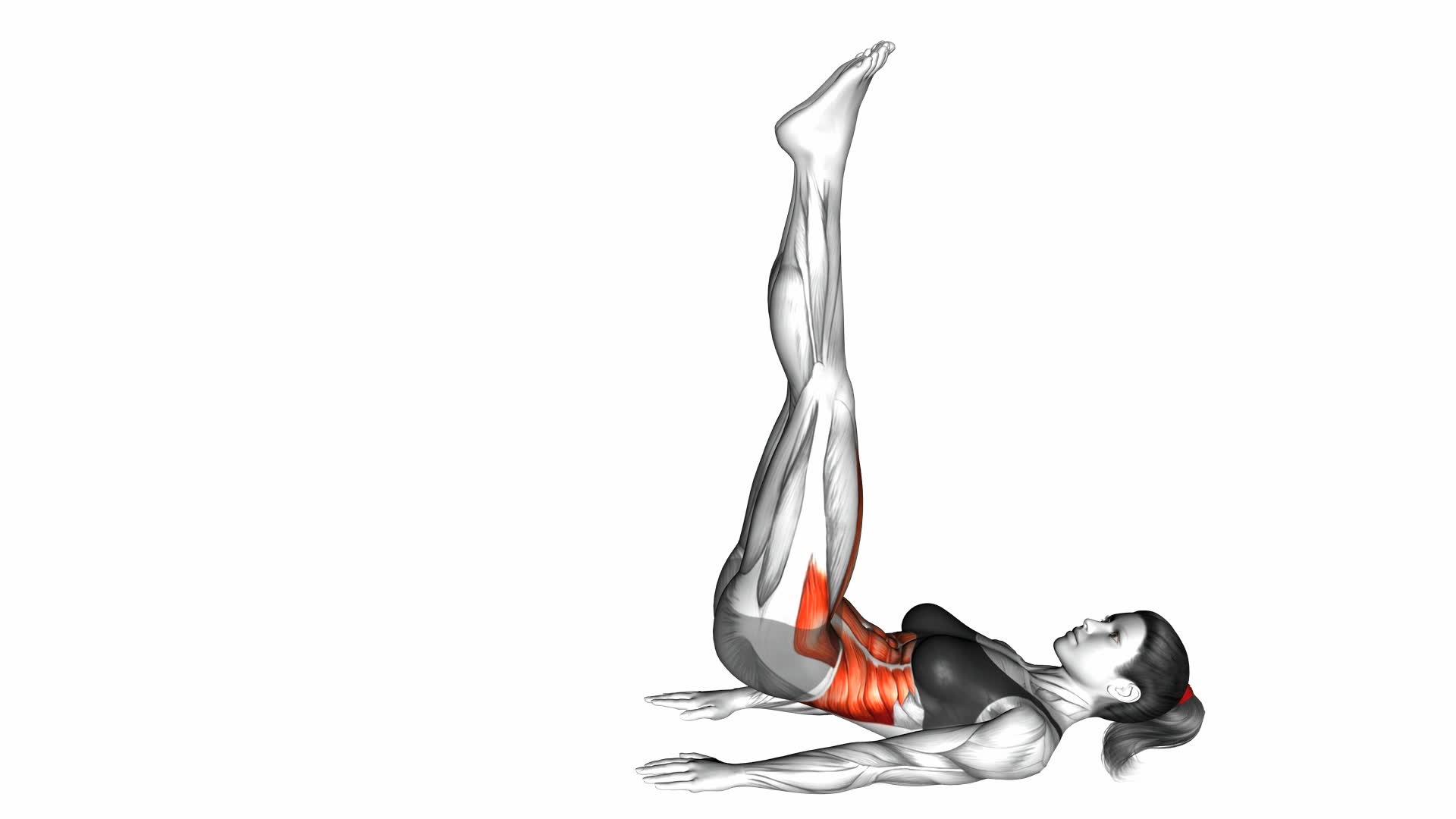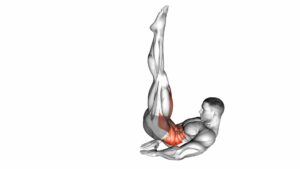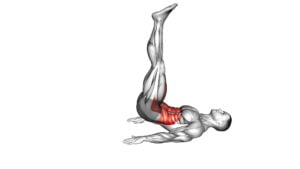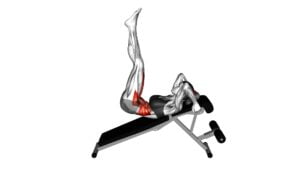Leg Raise Hip Lift – Video Exercise Guide & Tips

Looking to strengthen your core and hips? The Leg Raise Hip Lift is the perfect exercise for you.
Watch This Exercise Video
In this video exercise guide, you'll learn the proper form and technique to maximize your results.
Whether you're a beginner or advanced, this exercise can be modified to suit your fitness level.
Don't miss out on the benefits of this effective exercise.
Watch the video and get started today!
Key Takeaways
- Targets multiple muscles in the lower body, including hip flexors, glutes, and lower abs
- Improves core strength and abdominal muscles
- Enhances hip mobility and flexibility
- Reduces the risk of injuries and improves overall movement
Benefits of the Leg Raise Hip Lift
To maximize the effectiveness of your leg raise hip lift, it's important to understand the health benefits and muscle activation that this exercise can offer.
The leg raise hip lift is a compound exercise that targets multiple muscles in your lower body, including your hip flexors, glutes, and lower abs. By engaging these muscles, you can improve your overall strength and stability, which can have numerous benefits for your health.
One of the key health benefits of the leg raise hip lift is improved core strength. This exercise requires you to stabilize your core as you lift your legs, which can help to strengthen your abdominal muscles and improve your posture. Additionally, the leg raise hip lift can also help to improve hip mobility and flexibility, reducing the risk of injuries and improving your overall movement.
In terms of muscle activation, the leg raise hip lift primarily targets your hip flexors. These muscles are responsible for lifting your legs and are often underutilized in everyday activities. By strengthening your hip flexors, you can improve your ability to perform activities such as running, jumping, and even walking.
Equipment Needed for the Exercise
To perform the leg raise hip lift exercise, you'll need a sturdy exercise mat or a comfortable surface to lie down on. This will provide support and cushioning for your body during the exercise. Additionally, having a mat or comfortable surface will help prevent any discomfort or strain on your back and hips.
In terms of equipment, you don't need any specific tools or machines for the leg raise hip lift exercise. However, you may want to consider using ankle weights or resistance bands to add intensity and challenge to the exercise. These can help increase the resistance and engage your muscles even more.
If you're looking for variations of the leg raise exercise, there are a few options you can try. One variation is the hanging leg raise, which involves hanging from a pull-up bar and lifting your legs up towards your chest. Another variation is the seated leg raise, where you sit on a bench or chair and lift your legs straight out in front of you.
If the leg raise hip lift exercise is too challenging or uncomfortable for you, there are alternatives you can try. One alternative is the lying leg raise, where you lie flat on your back and lift your legs straight up towards the ceiling. Another alternative is the reverse crunch, where you lie on your back, bend your knees, and lift your hips off the ground by curling your knees towards your chest. These alternatives still target your core and hip muscles but may be easier to perform.
Proper Form and Technique
For proper form and technique during the leg raise hip lift exercise, ensure that your legs are straight and together, and your hands are placed underneath your lower back for support. Maintaining the correct form is crucial to avoid injury and maximize the effectiveness of this exercise.
Here are some important tips to keep in mind:
- Maintain proper posture: Avoid arching your back or lifting your shoulders off the ground. Keep your core engaged and your lower back pressed firmly against your hands. This will help to target the muscles in your lower abdomen and hips more effectively.
- Breathe properly: It's essential to synchronize your breathing with the movement. Exhale as you lift your legs off the ground and inhale as you lower them back down. This helps to engage your core muscles and maintain stability throughout the exercise.
- Control the movement: As you lift your legs, focus on using your abdominal muscles rather than relying on momentum. Lift your legs slowly and with control, ensuring that you feel the tension in your core. This will help to strengthen your abdominal muscles and improve stability.
Modifications and Progressions
Modify and progress the leg raise hip lift exercise by incorporating variations and challenging variations.
There are several alternatives and variations that can be done to make this exercise more challenging or to target specific muscle groups.
One option is to perform the exercise with ankle weights or a resistance band around your ankles. This added resistance will require your hip flexors and core muscles to work harder.
Another variation is to perform the exercise on a stability ball. This will challenge your balance and stability, as well as engage your core muscles even more.
If you want to target your obliques, you can try performing a side leg raise hip lift. Lie on your side and lift your leg up towards the ceiling, while keeping your hips lifted off the ground. This will engage the muscles on the side of your waist.
Lastly, you can progress the exercise by performing a single leg raise hip lift. Lift one leg off the ground and perform the exercise with just one leg. This will increase the difficulty and require more strength and stability.
Remember to always listen to your body and choose the modifications and progressions that are appropriate for your fitness level.
Common Mistakes to Avoid
Avoid the common mistakes that can hinder your progress and effectiveness when performing the leg raise hip lift exercise. By avoiding these errors, you can maximize your results while minimizing the risk of injury.
Here are three common mistakes to watch out for:
- Using momentum: One common mistake is using momentum to lift your legs instead of relying on your core muscles. This not only reduces the effectiveness of the exercise but also puts strain on your lower back. To avoid this, focus on engaging your core and lift your legs with control.
- Arching your back: Another mistake is arching your back as you lift your legs. This can lead to lower back pain and take the emphasis away from your abdominal muscles. Keep your back flat against the floor throughout the movement and concentrate on using your abs to lift your legs.
- Not maintaining proper form: It's crucial to maintain proper form throughout the exercise to avoid strain and injury. Make sure your legs are straight and your toes are pointed towards the ceiling. Keep your core engaged and avoid swinging your legs or using your arms for momentum.
Tips for Getting the Most Out of the Exercise
To maximize your results and enhance the effectiveness of the leg raise hip lift exercise, focus on incorporating these tips into your routine.
- One way to increase core strength while performing this exercise is by engaging your abdominal muscles throughout the movement. Imagine pulling your belly button towards your spine, creating a strong and stable core. This won't only help you maintain proper form but also intensify the workout for your abs.
- Another tip is to explore variations of the leg raise hip lift to challenge your muscles in different ways. You can try performing the exercise with ankle weights or using a stability ball. These variations add resistance and instability, forcing your core muscles to work harder to stabilize your body. Additionally, you can incorporate a twist at the top of the movement by rotating your legs to one side and then the other. This targets the obliques and further enhances the effectiveness of the exercise.
- Remember to breathe properly during the leg raise hip lift. Exhale as you lift your legs and engage your core, and inhale as you lower them back down. This rhythmic breathing helps to stabilize your core and maintain control throughout the exercise.
Frequently Asked Questions
How Many Sets and Reps Should I Do for the Leg Raise Hip Lift Exercise?
To determine the optimal rep range for the leg raise hip lift exercise, you need to consider your fitness level and goals. Beginners can start with 2-3 sets of 8-12 reps, focusing on proper form and technique.
As you progress, gradually increase the number of sets and reps to challenge your muscles. To intensify the exercise, you can add ankle weights or hold a dumbbell between your feet.
Always listen to your body and adjust the intensity accordingly.
Can Leg Raise Hip Lift Help in Reducing Belly Fat?
Leg raise hip lift is an effective exercise for reducing overall body fat, including belly fat. It targets the muscles in your lower abs and hip area, helping to tone and strengthen them.
However, it's important to remember that spot reduction isn't possible. To see the best results, combine leg raise hip lift with a healthy diet that's low in calories and high in nutrients. This will help you achieve your goal of reducing belly fat.
Is Leg Raise Hip Lift Suitable for Beginners?
Yes, the leg raise hip lift is suitable for beginners. It's a great exercise that targets the lower abs and hip flexors. To make it easier, you can modify the exercise by bending your knees or placing your hands under your hips for support.
Common mistakes in leg raise hip lift include using momentum and not engaging the core muscles properly. Practice proper form and start with a few repetitions, gradually increasing as you get stronger.
Can Leg Raise Hip Lift Exercise Help in Improving Posture?
Yes, the leg raise hip lift exercise can help improve your posture. By engaging your core muscles and targeting your hip flexors, this exercise promotes proper alignment of the spine and pelvis.
It also strengthens the lower back and glutes, which further supports good posture.
To perform this exercise correctly, lie on your back with legs extended, lift your legs off the ground while keeping them straight, and raise your hips towards the ceiling.
Remember to maintain control and avoid arching your lower back.
Are There Any Alternative Exercises That Target the Same Muscle Groups as the Leg Raise Hip Lift?
To target the same muscle groups as the leg raise hip lift, you can try plank variations and Russian twists.
Plank variations, such as side planks or mountain climbers, engage your core, glutes, and hip flexors.
Russian twists work your obliques, lower back, and hip muscles.
These exercises can help strengthen your posture and improve overall stability.
Remember to maintain proper form and gradually increase intensity as you progress.
Conclusion
In conclusion, the leg raise hip lift is a highly effective exercise that targets the core and lower body muscles. By using proper form and technique, individuals can maximize the benefits of this exercise.
It's important to start with the appropriate equipment and make modifications or progressions as needed. Avoiding common mistakes and following helpful tips will ensure that you get the most out of this exercise and achieve your fitness goals.

Author
Years ago, the spark of my life’s passion ignited in my mind the moment I stepped into the local gym for the first time. The inaugural bead of perspiration, the initial endeavor, the very first surge of endorphins, and a sense of pride that washed over me post-workout marked the beginning of my deep-seated interest in strength sports, fitness, and sports nutrition. This very curiosity blossomed rapidly into a profound fascination, propelling me to earn a Master’s degree in Physical Education from the Academy of Physical Education in Krakow, followed by a Sports Manager diploma from the Jagiellonian University. My journey of growth led me to gain more specialized qualifications, such as being a certified personal trainer with a focus on sports dietetics, a lifeguard, and an instructor for wellness and corrective gymnastics. Theoretical knowledge paired seamlessly with practical experience, reinforcing my belief that the transformation of individuals under my guidance was also a reflection of my personal growth. This belief holds true even today. Each day, I strive to push the boundaries and explore new realms. These realms gently elevate me to greater heights. The unique combination of passion for my field and the continuous quest for growth fuels my drive to break new ground.







